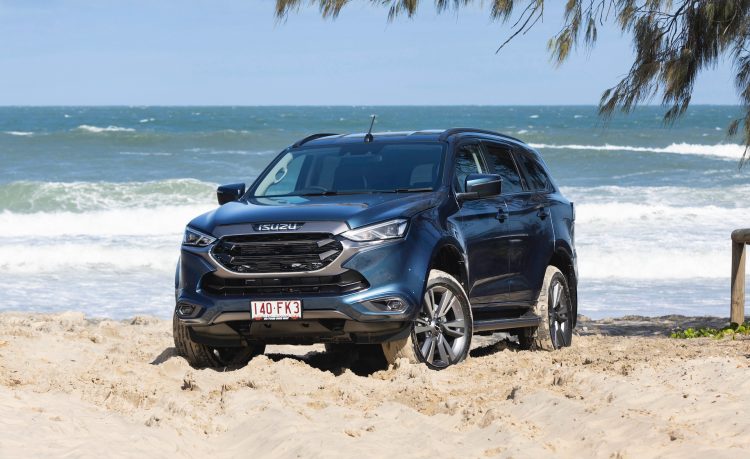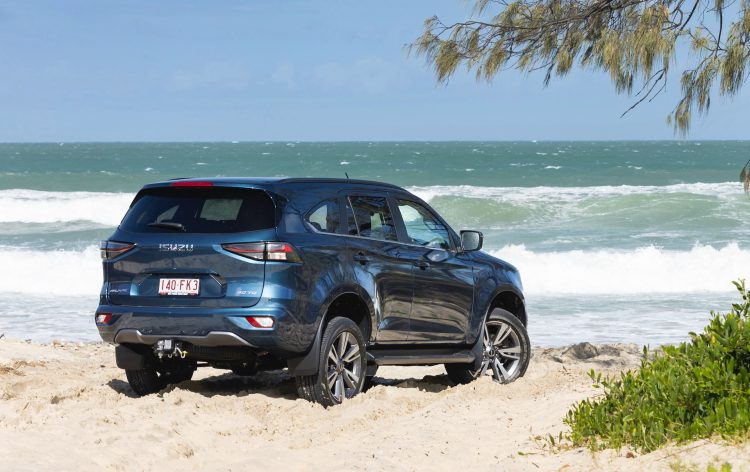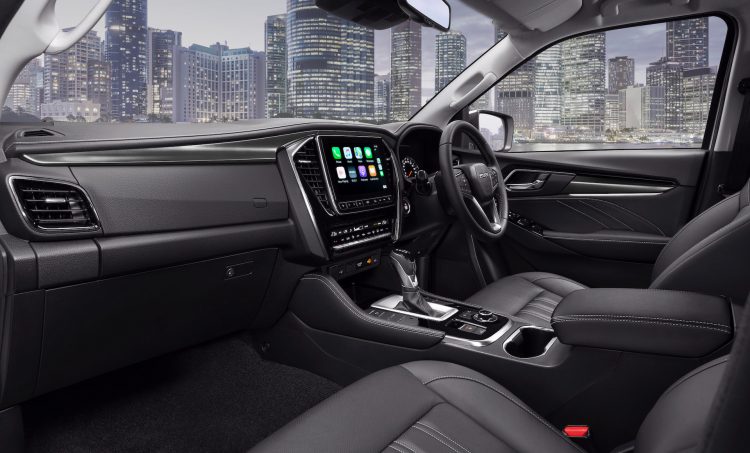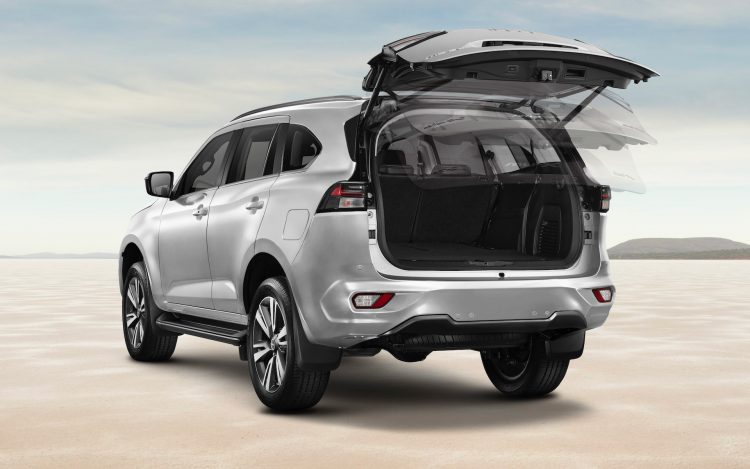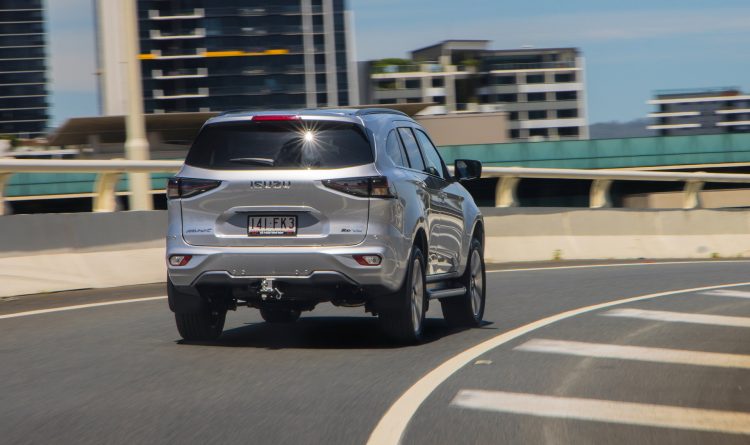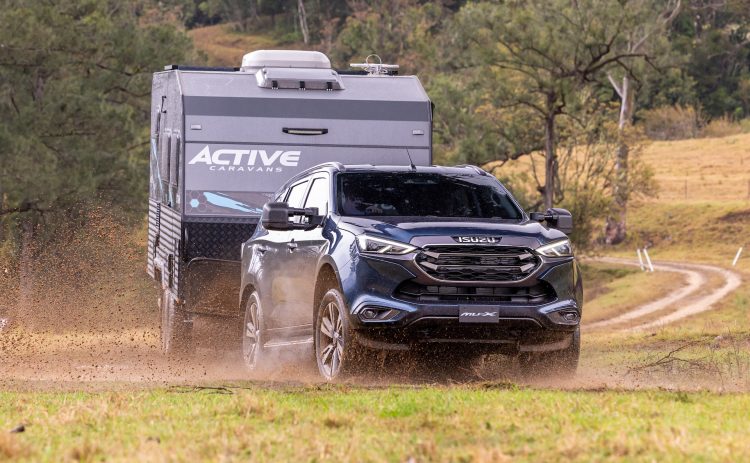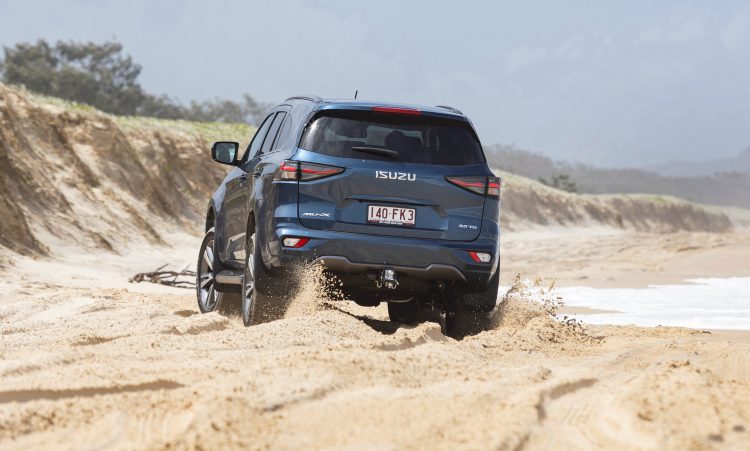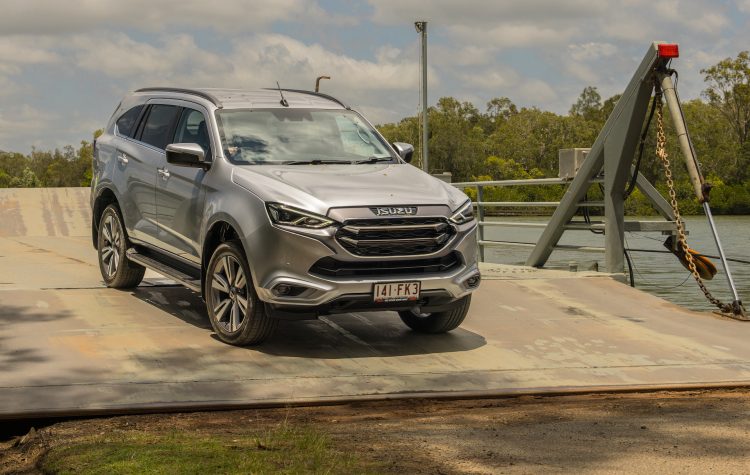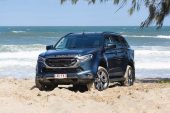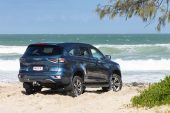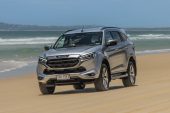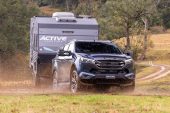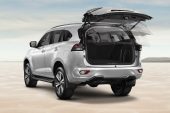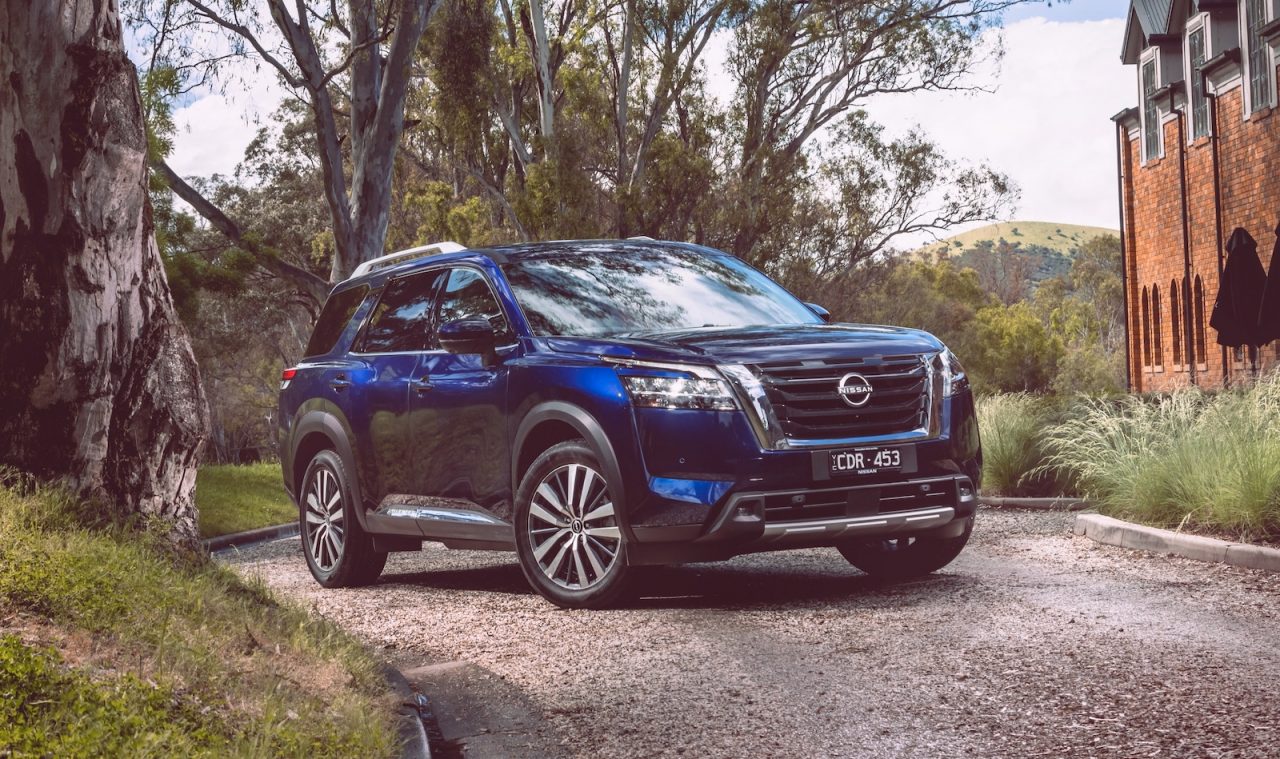Isuzu is looking to continue its success with the MU-X seven-seater SUV into 2023, but with very few changes in what is fast-becoming a progressive and more advanced segment, is Isuzu slipping behind?
The 2023 MU-X is being introduced as a minor facelift, with subtle revisions to the styling and colour options, and a number of “customer-driven” updates to help it remain attractive for its target market.
Three main trim grades are on sale, spanning from the LS-M, LS-U to the range-topping LS-T. All continue with the proven ‘4JJ’ 3.0-litre turbo-diesel four-cylinder engine that was drastically revised in 2021. It generates 140kW and 450Nm, matched to a six-speed automatic. Both RWD and 4WD options continue in all three grades.
2023 Isuzu MU-X – THE SPECS
Engine: 3.0-litre turbo-diesel four-cylinder
Output: 140kW@3600rpm / 450Nm@1600-2600rpm
Transmission: Six-speed auto
Drive type: Part-time four-wheel drive, locking rear diff
0-100km/h (PD tested): 9.85 seconds (based on MY2022 test results)
Official fuel economy: 8.3L/100km, RWD: 7.8L/100km
Starting price: from $48,900 for RWD, from $54,900 for 4WD
According to VFACTS new vehicle registration figures for November 2022, the Isuzu MU-X is the third most popular model in the large SUV ‘below $70k’ category. With 10,043 sales on the board so far this year, it occupies 9.0 per cent market share, and that tally is up 2.0 per cent on the same 11-month period last year. In other words, the MU-X is a very successful model not only for Isuzu but for its market segment.
Visual changes for MY2023 are limited to black exterior trimmings for the base LS-M and Magnetite (dark grey) for the LS-U and LS-T. This replaces the previous silver and chrome detailing on the outgoing model, providing a slightly more refined aesthetic. There’s also new six-spoke 17-inch alloy wheels for the LS-M, and new 20-inch wheels for the LS-T flagship. The mid-spec LS-U retains its 18-inch turbine-style wheels.
Fresh LED taillights are introduced at the back featuring dark grey metallic highlights for all variants, while the LS-U and LS-T welcome a powered tailgate, tyre pressure monitoring, and more Magnetite accents for the interior. Lastly, all variants introduce a new blind-spot monitoring and rear cross-traffic alert ‘auto off’ function when towing.
Since a trailer or caravan would otherwise interfere with these safety assist systems, now, the vehicle is able to determine when a trailer is hitched and automatically turn off such functionality.
Regardless of which model grade you go for the MU-X offers a spacious and practical cabin. Some of the materials seem more focused on being hard-wearing than luxurious or comfort-oriented, but given its relatively attractive price range you couldn’t ask for anything more. We’re sure more buyers of a durable SUV like this would prefer the longer-lasting approach anyway.
Passenger space is great for this class, with a nice and roomy front section with supportive seats, and a good range of adjustment so you can find an ideal driving position to support long-distance touring. One-touch power windows are not available except on the driver’s door, which we think is a bit of a cop out – it’s just a little plastic switch, after all.
Another area that is falling behind the market in our opinion is the touch-screen and user technology. Measuring in at 9.0 inches, the screen is obviously large and impressive in that respect, but the graphics are not super-clear and there is lots of blank space around some widgets, depending on where you are navigating through the menus.
Other modern technologies, some of which are becoming standard issue these days, are not included in any variant. For example, wireless phone charging, USB-C charging facilities, rear climate control, and seat heating/ventilation options are not available on any model. There is no option for a panoramic glass roof or sunroof, either.
However, this cabin is very practical and user-friendly. Most of the controls and seats are simple to understand or reach, and the clean and clutter-free design makes it easy to haul a growing family. Boot space is rated at 311 litres with all three rows up, or up to 2138L with both rear seat rows folded down.
Out on the road the MU-X feels taut but comfortable. The heavy-duty underpinnings are shared with the D-Max ute, but instead of leaf springs at the back the MU-X uses coil springs. This makes a huge difference to not only ride quality but also road holding and compliance. The rear wheels are much less likely to bounce and shudder over corrugations with coil springs.
Even so, the towing capacity is at the maximum legal limit for passenger cars with a conventional tow hitch, at 3500kg when using a braked trailer. If they trailer does not feature its own brakes then the rating falls to the maximum allowed limit of 750kg. These ratings position the MU-X right near the top of the class. What’s more important though is the gross combination mass.
As a quick comparison we’ll use the recently-launched Ford Everest in top spec Platinum form, against the top spec MU-X LS-T. The Isuzu offers a GCM of 5900kg and a kerb weight 2180kg. So then subtracting the kerb weight from the GCM as well as the maximum towing capacity and you’re left with just 220kg for passengers and cargo. The same calculation on the Everest Platinum results in a leftover capacity of 258kg.
There isn’t much in it (the reason we selected the Ford Everest was simply because it is the most recent/modern model to launch in this class). If you go for the base models the figures are more favourable, and in fact we’d recommend not going for the flagship models if you are planning to tow a heavy load with the family multiple times per year. Simply because you will be running very close to the maximum capacities. The lighter-weight mid-spec and entry models offer more leeway.
In terms of engine performance and economy, this 3.0-litre unit has been a star performer for many years. It’s known to be very reliable, and since its little power and torque boost a couple of years ago, acceleration and overtaking is easier than ever before. The last time we tested the MU-X, in December 2021, it achieved 0-100km/h in a very respectable 9.85 seconds. According to our performance results database that is quite a good time for a heavy-duty, ladder-frame SUV like this.
Fuel economy is rated at 8.3L/100km in the 4WD models and 7.8L/100km in the RWD models. We’re not sure if we would ever go for a RWD model since one of the main points of an SUV like this is to utilise the off-road capability. If you are not planning to go off road then why not look at a conventional wagon or crossover?
About the only benefit we see is the towing capacity. So, applying that same calculation with the GCM as above, the base model LS-M in RWD configuration offers a leftover capacity of 355kg. The higher figure is due to the lower kerb weight of the RWD underpinnings, while retaining the same GCM and towing ratings.
It mightn’t be the most advanced or modern SUV out there but in terms of dependability and durability, and good old-fashioned know-how, the 2023 Isuzu MU-X remains a solid option for adventurous families and caravan holidayers. This is only a mid-cycle update so don’t expect big changes, however, this might come across as good news for traditional fans who cherish these characteristics.
Isuzu continues offer a six-year/150,000km warranty on its vehicles, with regular services scheduled every 15,000km or every 12 months (whichever comes first). See below for the full price list (excludes on-road costs unless otherwise stated):
MY2023 Isuzu MU-X LS-M 4×2: $48,900
MY2023 Isuzu MU-X LS-U 4×2: $55,400
MY2023 Isuzu MU-X LS-T 4×2: $61,400
MY2023 Isuzu MU-X LS-M 4×4: $54,900
MY2023 Isuzu MU-X LS-U 4×4: $61,400
MY2023 Isuzu MU-X LS-T 4×4: $67,400 ($65,990 special drive-away price)
